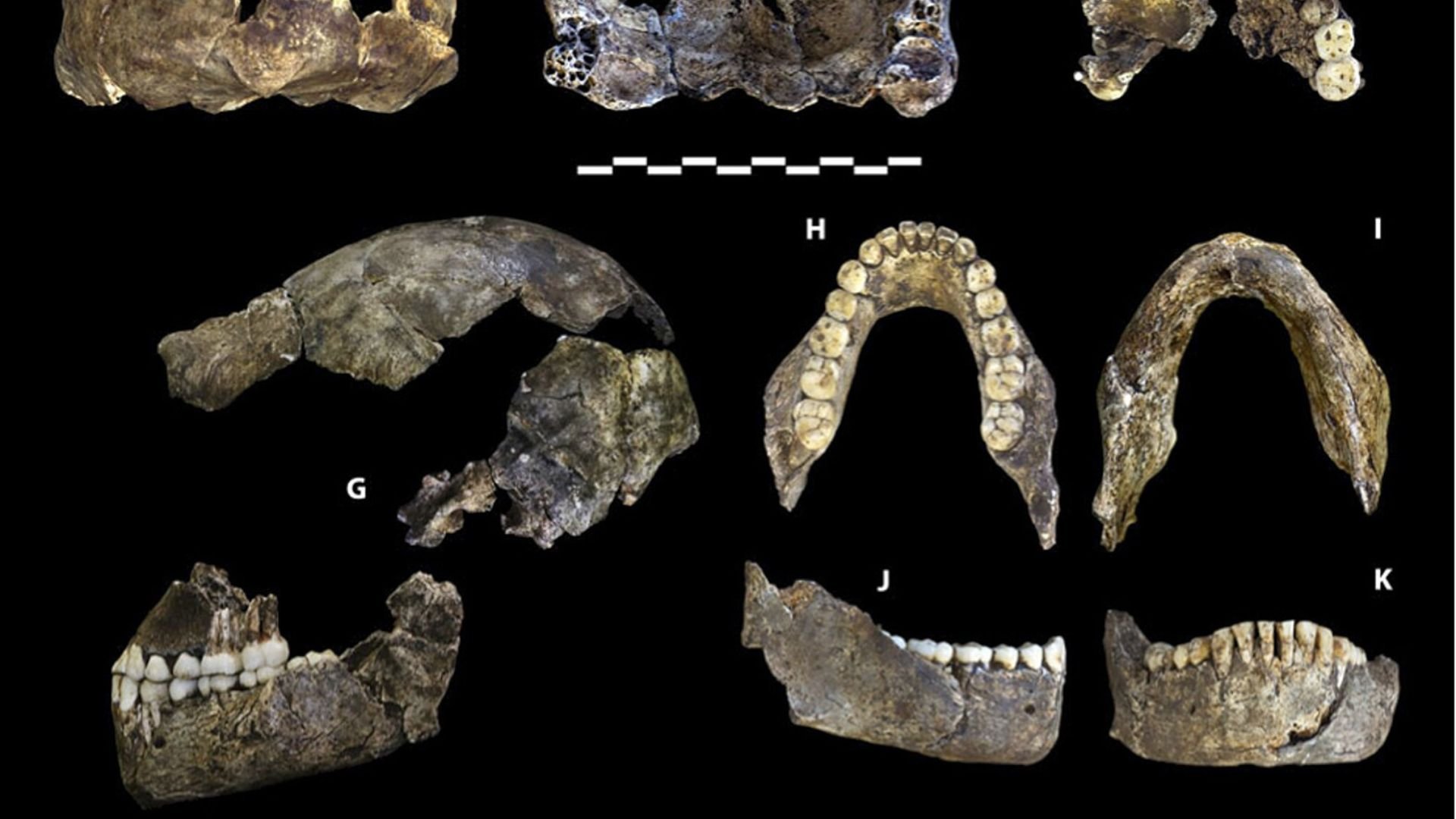X-Rays of “Alien Mummy” Show Something Sinister Beneath the Surface
In 2017, local farmers in Nazca, Peru, unearthed peculiar bodies with elongated skulls and tri-digital limbs.
These unique features quickly attracted global attention, prompting extensive scientific examination. The discovery sparked debates about their origins, with some speculating extraterrestrial connections.
Initial Skepticism
Upon discovery, many experts were skeptical, considering the bodies potential hoaxes.

Source: Freepik
However, further investigation revealed these beings were genuine biological entities. This shifted the focus from skepticism to scientific curiosity and validation.
Detailed Anatomical Study
Scientists from Saint Aloysius Gonzaga National University in Ica conducted detailed studies.

Source: Freepik
They classified the specimens as “humanoid,” noting their similarities to humans but highlighting significant anatomical differences, such as their elongated skulls and tri-digital limbs.
Unique Skull Features
X-ray images revealed the specimens’ skulls were 30% larger than human skulls.

Source: Freepik
This significant cranial volume increase accompanied by elongated skulls suggests these beings had unique evolutionary traits, distinct from known human ancestors.
Tri-Digital Limbs
One of the most intriguing features is the tri-digital hands and feet.

Source: researchgate.net/X
Unlike humans, these beings had only three fingers and toes, a trait that has fueled further speculation about their origins and adaptations.
Lack of Eyes and Traditional Ears
The mummies lack traditional eyes and ears, with openings for auditory ducts instead.

Source: @DidYouKnow/YouTube
This absence of eyes is unusual and raises questions about their sensory capabilities and how they navigated their environment.
Carbon-14 Dating Results
Carbon-14 dating analysis confirmed the specimens’ age to be approximately 1,700 years old, dating back to 240 AD-383 AD.

Source: Freepik
This ancient timeline places them in a significant historical context, providing a bit of insight into their era.
Facial and Dental Structure
The specimens exhibited facial symmetry with a convex profile and voluminous lips.

Source: Wikimedia Commons
Dental examinations revealed severe dental abrasion and loss of teeth, indicating they may have had a challenging diet or lifestyle.
Internal Composition
X-ray scans showed various internal differences, including the absence of the fifth lumbar vertebra.

Source: Wikimedia
These structural variations further emphasize the distinctiveness of these beings compared to humans.
Scientific Conclusions
The study concluded that the mummies are dried humanoid bodies with biological architecture similar to humans but with many structural differences.

Source: Wikimedia
The classification as “humanoid” provides a basis for understanding their place in the evolutionary timeline, albeit still shrouded in mystery.
Cultural and Historical Significance
The discovery in Nazca, a region known for its ancient geoglyphs, adds cultural and historical significance to these findings.

Source: Diego Delso/ Wikimedia Commons
It suggests a possible link between these beings and the ancient civilizations that once thrived in the area.
Ongoing Research and Speculation
While significant findings have been made, ongoing research aims to uncover more about these mysterious beings.

Source: Wikimedia
The scientific community remains engaged in understanding their origins, adaptations, and implications for our knowledge of ancient life.
Revealing the Mummies to the World
Mexican journalist and UFO enthusiast Jamie Maussan claims that these bodies were about 1,000 years old. However, researchers cannot find any known species that the bodies could relate to.

Source: Canva
These nonhuman beings made a significant archaeological discovery during a public hearing in the Green Room of the Chamber of Deputies Congress of Mexico.
The Discovery of the Aliens
According to Wired, Maussan said that the bodies “are nonhuman beings that are not part of our terrestrial evolution.”

Source: Wikimedia
“According to UNAM [the Autonomous University of Mexico], who performed the carbon-14 analysis, these beings are about 1,000 years old. Maussan added, “They did not recover them in ships that crashed, but buried them in diatomaceous earth, a fossilized algae that is 17 million years old and was abundant at that time.”
NASA’s Plea for Involvement
BBC News Digital journalist asked NASA’s UAP study team chair, David Spergel, if NASA has been in touch with Mexican authorities about the “rather sensational revelations.” Spergel speculated that mummies were being kept in Mexico.

Source: Wikimedia
“If I was the Mexican government, if I would make a recommendation to the Mexican government — that’s not our charge here, we’re doing this for NASA — my recommendation [would be]: If you have something strange, make samples available to the world scientific community and we’ll see what’s there,” Spergel said (via Space).
Is It a Hoax?
The international scientific community largely discredited these “tridactyl Nazca humanoid mummies,” suspecting that they had manipulated them to give them a different appearance.

Source: Freepik
Important organizations like the World Committee on Mummy Studies rejected the authenticity of the mummies, describing the discovery as a fraud and calling it “an irresponsible organized campaign of misinformation,” (via Wired).
More Research Finds Something Shocking
After further research, scientific analysis confirmed that these “alien mummies” are not connected to alien life. Instead, experts in Lima revealed to the press that they likely fashioned these humanoid dolls from both human and animal parts.

Source: Wikimedia
“They’re not extraterrestrials. They’re dolls made from animal bones from this planet joined together with modern synthetic glue,” said Flavio Estrada, an archeologist with Peru’s Institute for Legal Medicine and Forensic Sciences (via Reuters).
The Modified Mummies
Some experts believe that the mummies modify pre-Hispanic human bodies, while others argue that they create a Frankenstein-like combination of animal and human bones.

Source: KNOWN STUDIO NEWS/X
“Physical anthropologist Guido Lombardi, who has studied mummies in Peru, told the newspaper El Comercio that researchers who have worked with pre-Columbian mummies, especially from the Nazca area, clearly understand that the large mummies are pre-Columbian human beings modified for commercial purposes, and the supposed ‘small mummies’ are assembled structures.”
“A Huge Step Backwards”
“What happened yesterday in the Mexican Congress was a spectacle, with information that is not necessarily verifiable, the product of fanaticism that is more about media spectacle and political gain than explaining the phenomenon of possible life beyond our planet,” says Raúl Trejo Delarbre, a researcher at the Institute for Social Research and a doctor in sociology from the Faculty of Political and Social Sciences at UNAM.

Source: Wikimedia
“And, above all else, it is a matter that is beyond the scope of Congress.” After the hearing, Ryan Graves, the retired US Navy pilot lieutenant who was among the attendees, expressed his disappointment and described the events as “a huge step backwards” and an “unsubstantiated stunt.”
Maussan, the Great Alien Hoaxer
This isn’t the first time Maussan has appeared in a hearing held by the Mexican Congress. After receiving an invitation from a deputy from PRI, another political party, for a hearing focused on geometric figures, including crop circles, Maussan pleaded his case about aliens living among us.

Source: Nathan Cowley/Pexels
After his visit, the Institute of Astronomy at UNAM issued a statement that claims “there is no observational or experimental report that provides evidence of the existence of life beyond Earth.”
The Waste of Attention
“Science has processes, routines, and an eagerness to question its own conclusions,” Raúl Trejo Delarbre, a researcher at the Institute for Social Research and a doctor in sociology from the Faculty of Political and Social Sciences at UNAM, tells Wired.

Source: Andrea Piacquadio/Pexels
He continues: “No one denies that there could be life on other planets. I am concerned about this waste of attention in the public discussion and also about the possible waste of resources.”
UNAM Speaks Out
“In May 2017, the National Accelerator Mass Spectrometry Laboratory (LEMA) conducted a carbon-14 dating study on a set of samples, which the client identified as skin and brain tissue weighing approximately 0.5 grams. The results were issued in June of the same year and delivered to the requesting user,” reads a statement published by the Institute of Physics at UNAM.

Source: Erik Törner/Pexels
“As this is a commercial agreement, these results are confidential and no member of the LEMA can disseminate them,” the Institute of Physics said. “LEMA rejects any subsequent use, interpretation, or misrepresentation of the results it issues. In the case of the June 2017 analysis, any information that implies the participation of LEMA in any activity other than carbon 14 dating is invalid.”
Putting Mexican Congress in a Bad Light
Not everyone thrilled with the wild speculation and media circus around the madman mummies.

Source: Antony Stanley/Flickr
Trejo Delarbre said, “The spectacle aligns with the anti-scientific attitude of the current Mexican government, casting a very bad light on the seriousness and commitment to science that the Mexican Congress should uphold.”
A Step Back for Mexican Researchers
While Maussan’s claims about alien life, the effects of his display have caused a rift in the country’s scientific reputation.

Source: Brian McMahon/Unsplash
Some researchers are calling for the Mexican government to speak up and take action regarding the alien debacle, but no one has spoken about the facts surrounding the Nazca mummies.
